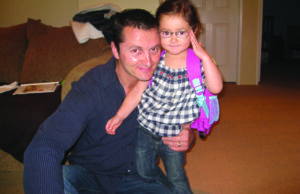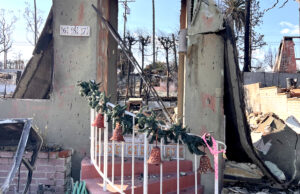When seasonal depression clashes with holiday cheer
The weather has a powerful impact on our daily life. It influences our schedules, outfits, transportation and most of all, our moods. For most, the holidays are a time to reconnect with family members and to bathe in the seasonal decor for a few months before the warm weather comes creeping back. It is a time to feel cherished, connected and whole. But with all of the warmth the cold weather brings, there is a dark resistance that pulls on heartstrings, especially for those with Seasonal Affective Disorder [SAD]. SAD is a common type of depression that lingers during the quieter, colder months. According to a Kaiser Family Foundation analysis of a new federal survey of teen health, 1 out of 5 adolescents report symptoms of a form of depression. SAD is a recurrent seasonal pattern, filtering out between every 4-5 months for those who are affected. Even in a room full of loved ones, hot air full of cider, amber-lit candles and all the seasonal favorite meals, there might be an emptiness that lingers.
We know the danger of social media and the technological abuse that goes on behind the scenes from teenagers and adults, but the isolation technology has enabled us has only worsened SAD symptoms. So many factors build up in our subconscious mind, and all the stress materializes the more we find ways to disconnect. The limitless connection through a place of isolation is a new way of life now, and the more we can learn to adapt healthily from the doom scrolling to being in the present moment, the more the loneliness might fade.
Sometimes the demand of switching from an intense working environment towards the tail end of the semester, to the relaxation of break and family mingling, is a slow and painful transition. The expectation to jump into a vacation after long days at school is a culture shock, and isolation is more common than it is not. There is a clear disconnect between the outward joy of the holiday season and the internal struggle to adapt, leaving many teens feeling out of place even in their own homes.
SAD doesn’t only affect people during the colder months. For me, I have Summer Seasonal Affective Disorder. My symptoms show up primarily during early summer. The longer days, heat and reduced melatonin levels last all throughout June and August, subsiding during the autumn months. With the warmer weather, there are tons of festivities during the summer and the isolation that depression brings during these months is just as exhausting during the holiday season. I know the feeling of standing in a room and not recognizing yourself in it. Even when surrounded by the people that you love, it takes energy and time to get back into shape and to understand how powerful human connection is when feeling this way.
Whether it is a yearly thing or something that has seemed to come out of the blue, SAD is more common than we think. It is important to understand that not everyone experiences the seasons the same way. For those of us navigating the weight of seasonal depression, it is okay to feel out of step with the world around us. Healing does not follow a holiday schedule, and self-compassion is just as vital as the love we share with others. By opening up, leaning on trusted friends or family and seeking help when needed, we can remind ourselves that even in the longest winters, spring always follows.



